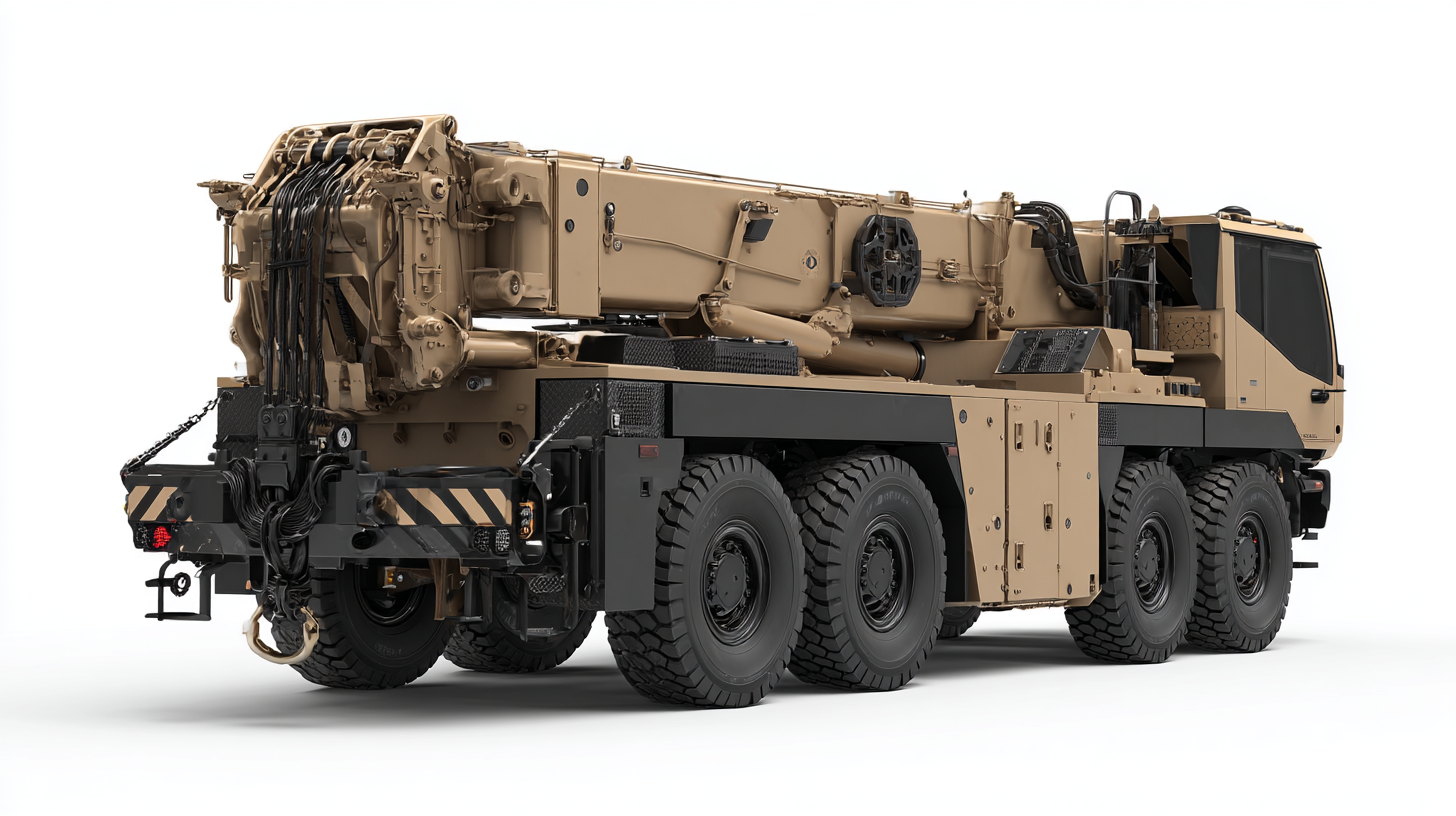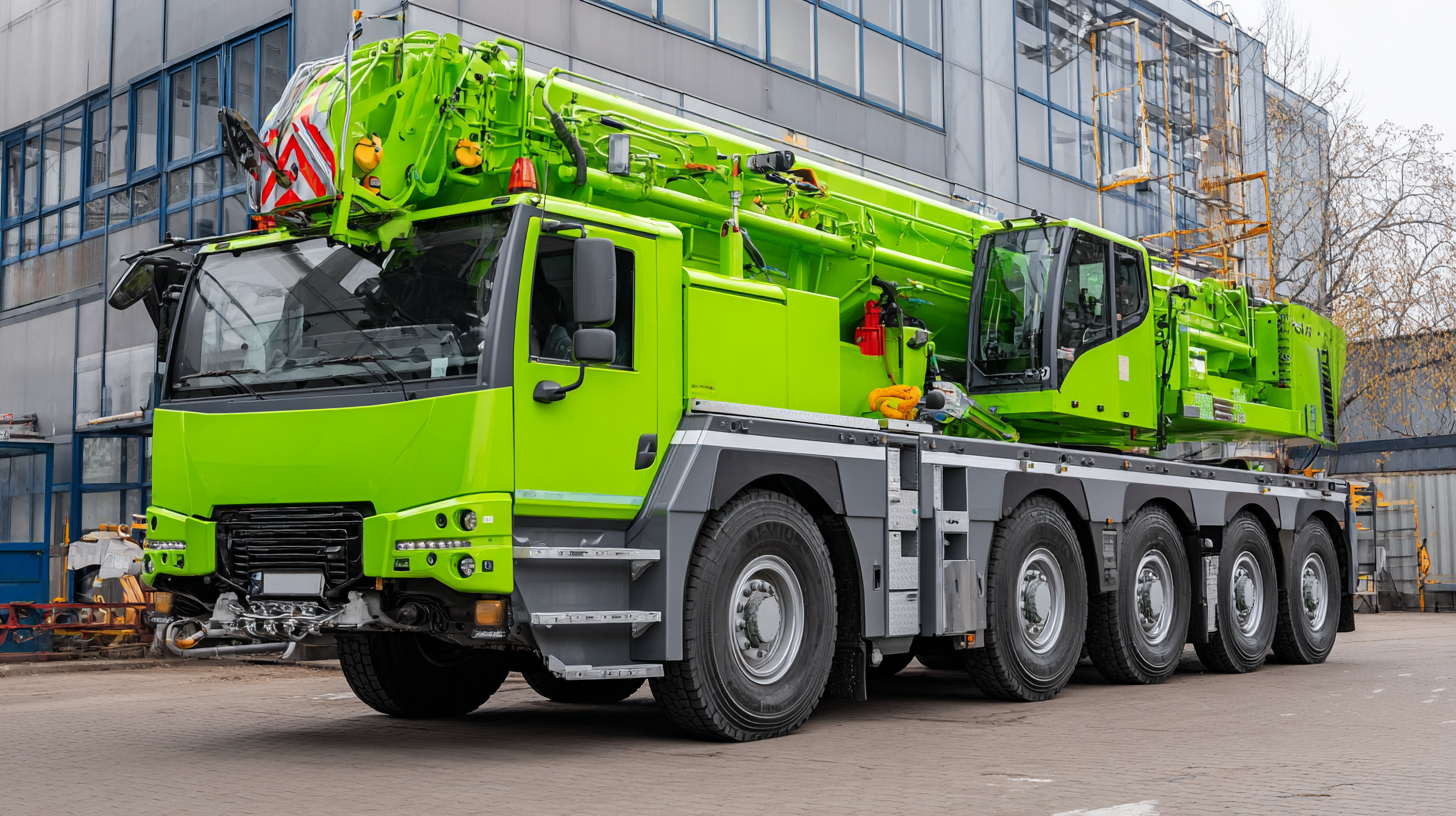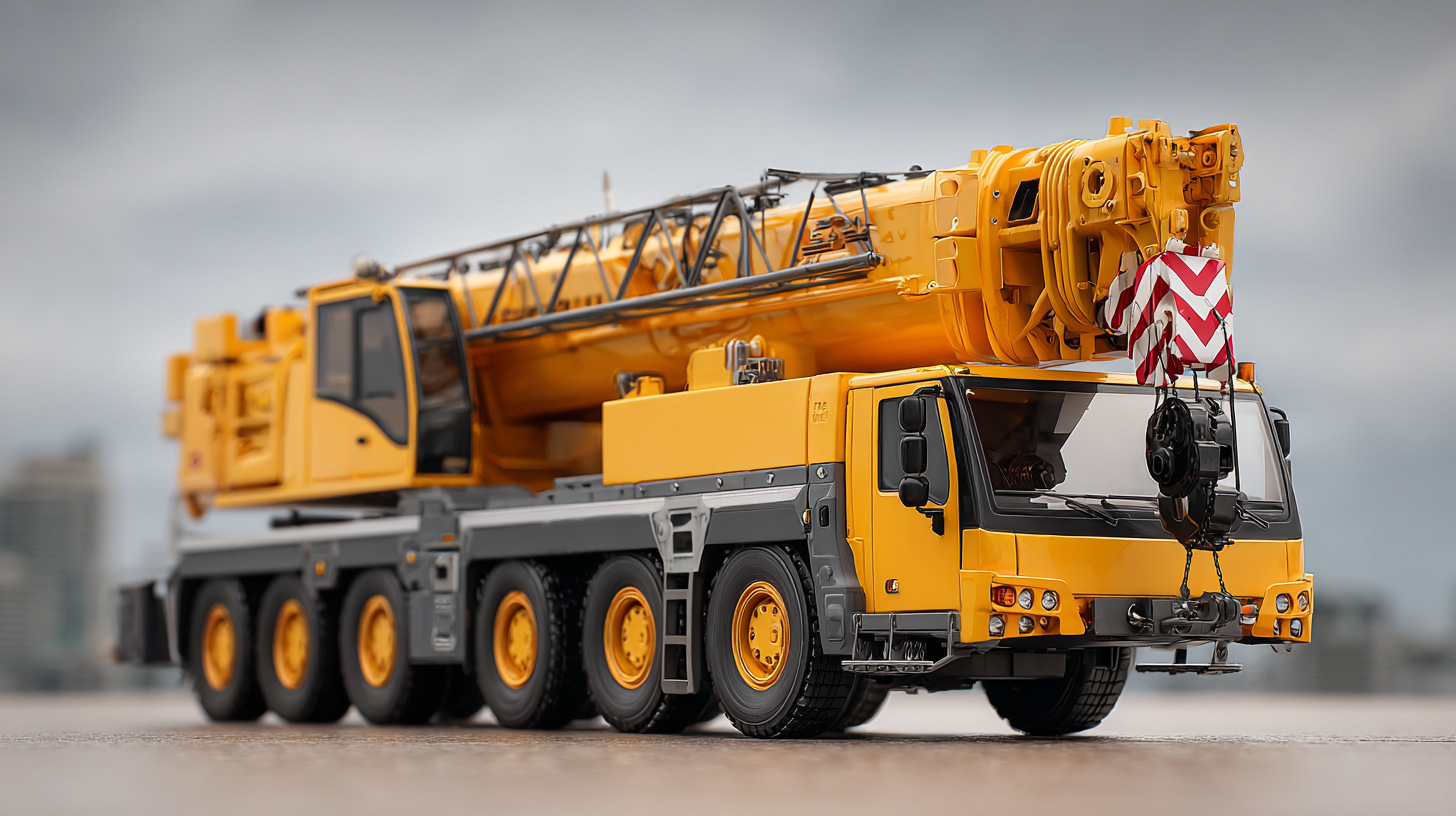Leave Your Message
-
Phone
-
E-mail
-
WhatsApp
In today's fast-paced industrial landscape, the efficiency of operations often hinges on the reliability and functionality of equipment, with the towing crane playing a pivotal role. According to a recent report by MarketsandMarkets, the global crane market is expected to reach $48.5 billion by 2026, driven primarily by the increasing demand for construction and heavy-lifting operations across various sectors.

Choosing the best towing crane not only enhances operational efficiency but also ensures compliance with strict international import and export certifications, crucial for maintaining a competitive edge. Businesses that invest in high-quality towing cranes can significantly reduce downtime and increase productivity, reflecting the necessity of making informed decisions in equipment selection.
As we delve into the advantages of selecting the right towing crane for your operations, we will explore how these machines can unlock unprecedented efficiency and cater to the growing demands of the industry.
When selecting the right towing crane for your operations, several key factors can significantly impact your operational efficiency. The load capacity and lifting height are among the foremost considerations, as they determine the types of projects you can undertake and the efficiency with which you can execute them. Additionally, the crane's mobility and maneuverability within your worksite can either enhance or hinder productivity. In many cases, a crane that is easy to transport and reposition can save valuable time and reduce labor costs during complex operations.
Furthermore, compliance with industry regulations, such as those outlined under Subchapter M, plays a crucial role in operational efficiency. Embracing options like the TSMS can provide businesses with greater autonomy in managing their operations while ensuring safety standards are met. This compliance not only fosters a safe working environment but also streamlines processes, enabling teams to focus on their core tasks.

As businesses increasingly look toward innovative solutions, such as advancements in floating wind technology, the careful selection of equipment like towing cranes becomes essential in maintaining a competitive edge and improving overall operational performance.
Selecting the right towing crane for your operations can have a significant impact on efficiency and productivity, especially when it comes to understanding load capacities. To maximize performance, it’s crucial to match the crane’s specifications with the job requirements. For instance, cranes like the powerful models capable of lifting loads exceeding 1600 tons showcase the sheer strength needed for large-scale operations. Knowing the maximum weight and height limits will ensure that you select a crane that can handle the demands of your site, whether it be for construction or heavy lifting in industrial applications.
When considering a crane for your project, here are some essential tips: First, always assess the maximum load capacity required for your operations. Too often, operators underestimate the weight of the materials, leading to unsafe conditions. Second, consider the crane's mobility and whether it can traverse public roads and various terrains without compromising efficiency. Finally, ensure that operators are trained and familiar with the specific crane model, as this knowledge can significantly influence safety and efficiency during operations. By prioritizing these considerations, you can ensure a seamless lifting experience that meets both productivity and safety standards.
When it comes to selecting a towing crane, fuel efficiency is a critical factor that significantly impacts overall operating costs. According to a report from the American Crane and Transport Association, choosing a crane with an optimized design can reduce fuel consumption by up to 30%. This reduction not only lowers direct fuel expenses but also minimizes the carbon footprint of operations, making businesses more environmentally responsible.
Crane design features such as weight distribution, engine efficiency, and hydraulic technology play crucial roles in determining fuel usage. A study conducted by the International Energy Agency highlights that modern cranes equipped with advanced hydraulics can achieve fuel savings of 15-20%, simply through improved power management systems. Additionally, regular maintenance of crane components, as suggested by the Crane Certification Association, can ensure that machines operate at peak efficiency, further reducing fuel costs over time. As companies increasingly focus on sustainability and cost management, the need for the best towing crane that combines efficiency with performance becomes paramount.
| Crane Model | Max Load Capacity (tons) | Fuel Type | Average Fuel Consumption (L/h) | Operational Cost (per hour) |
|---|---|---|---|---|
| Model A | 15 | Diesel | 12 | $60 |
| Model B | 20 | Gasoline | 10 | $55 |
| Model C | 10 | Electric | 8 | $40 |
| Model D | 25 | Diesel | 15 | $75 |
Ensuring that your towing crane meets industry regulations is paramount for safe and efficient operations. Compliance with safety standards not only protects your workers but also minimizes the risk of accidents that can lead to costly downtime and legal ramifications. The towing crane industry is governed by a variety of regulations, ranging from lifting capacities to operational protocols. By selecting a crane designed for compliance, you position your operations to follow the best practices outlined in these guidelines, safeguarding your business and workforce.
Investing in a towing crane that meets rigorous safety standards also enhances your operational efficiency. Cranes equipped with the latest technology and safety features, such as overload protection and routine diagnostic checks, can significantly reduce the likelihood of failures. Furthermore, equipment that adheres to compliance requirements typically undergoes thorough testing and certification, providing peace of mind that you are using a reliable and safe machine. By prioritizing safety and regulation compliance in your equipment choices, you ensure that your operational workflow remains uninterrupted and efficient, leading to long-term benefits for your business.
In today's fast-paced industrial environment, selecting the best towing crane can significantly enhance workflow and productivity. With modern crane technology continuously evolving, the integration of innovative features is paramount in unlocking operational efficiencies. For instance, advanced load-sensing systems and telematics allow operators to monitor and optimize lifting processes in real time. This not only results in smoother operations but also maximizes safety by preventing overloads and ensuring compliance with industry standards.
Another notable advancement is the development of automated controls and smart connectivity. These features enable seamless communication between cranes and other machinery, facilitating dynamic adjustments to enhance performance. As highlighted in recent industry discussions, embracing digital technology in crane operations positions companies to thrive in an increasingly competitive market.
Tips for Optimal Crane Selection:
- Assess the required lifting capacity and features that align with your specific operations.
- Look for cranes equipped with advanced safety features to protect both workers and equipment.
- Consider the ease of maintenance and availability of service support to ensure operational continuity.

